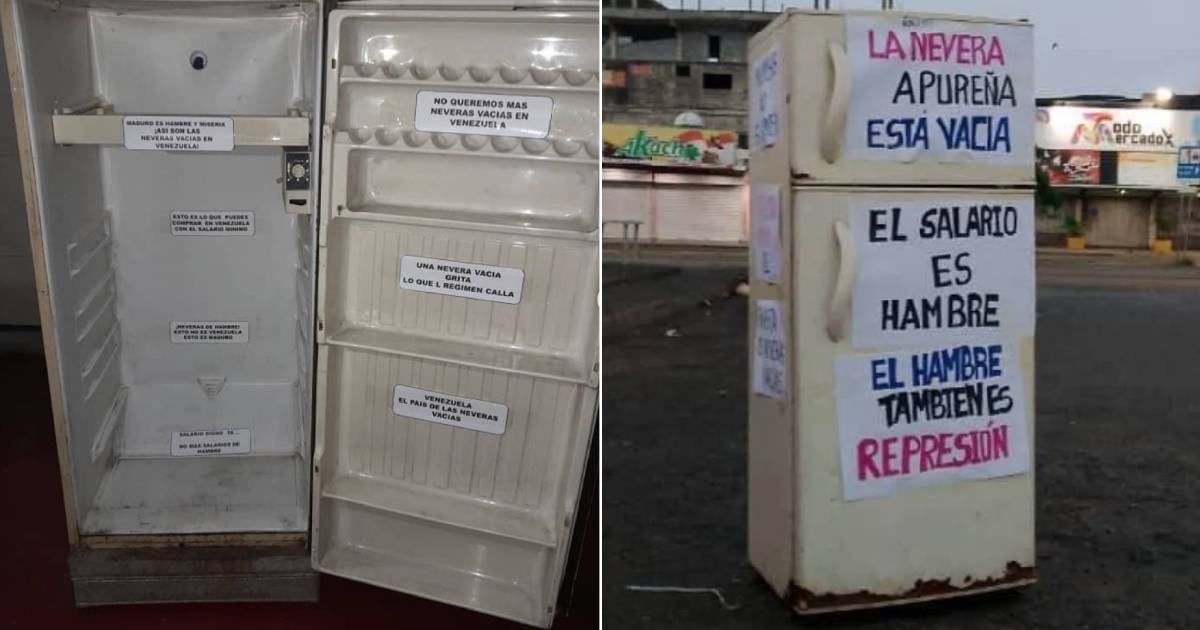On May Day, thousands of Venezuelans chose to participate in a powerful and symbolic protest: showcasing their empty refrigerators to highlight the severe food insecurity affecting millions of families across the nation. Under the hashtag #NeverasDeHambre (Refrigerators of Hunger), individuals from various regions took to social media, sharing images of their fridges barren of food. The message was stark: repression is also wielded through starvation, as reported by La Patilla.
The campaign aims to bring attention to the daily struggles of the most vulnerable groups—such as pensioners, single mothers, and children—who are caught in a collapsed economic system with no governmental support in sight. Alongside the photos, some demonstrators took to the streets with coffins, banners, and empty appliances, symbolizing the slow death of purchasing power in Venezuela.
Meanwhile, in Cuba, fuel was prioritized for the parade, not cooking
Simultaneously, Cuba celebrated its traditional May Day parade, with the regime claiming to have mobilized over 600,000 people in Havana and more than 5 million across the country, according to official statistics. Despite prolonged blackouts, shortages, lack of transportation, and suffocating inflation, the government managed to gather fuel to ensure a massive turnout at the central event in Revolution Square. The event was led by Miguel Díaz-Canel and his wife Lis Cuesta, both wearing patriotic shirts and Palestinian scarves, a now-customary gesture.
While Venezuelans protest wages insufficient for even a bag of flour, Cuba faces a similarly dire situation: most families lack both food to cook and the means to do so. The structural crisis, compounded by productive paralysis and mass exodus, leaves millions of Cubans in daily distress.
A May Day of Contrast: Citizen Protest vs. Official Propaganda
The images emerging from Venezuela, featuring empty refrigerators as symbols of resistance, starkly contrast with the Cuban regime's portrayal of a nation supposedly mobilized by conviction. In reality, attendance is coerced and monitored. Both scenarios expose a shared underlying reality: two allied regimes, two populations subjected to scarcity, and two different methods of expressing frustration.
This May Day unveiled not a celebration of labor but a stark portrayal of hunger and resilience in two countries marked by authoritarianism, propaganda, and the neglect of ordinary citizens.
Venezuelan and Cuban May Day Protests: Key Questions
What was the purpose of Venezuelans displaying empty refrigerators?
The display of empty refrigerators was a symbolic protest aimed at highlighting the severe food insecurity faced by millions of Venezuelan families, drawing attention to the government's failure to address the economic collapse.
How did the Cuban government prioritize resources during May Day?
Despite widespread shortages and blackouts, the Cuban government allocated fuel to ensure high attendance at the May Day parade, prioritizing propaganda efforts over the basic needs of its citizens.
What similarities exist between the situations in Venezuela and Cuba?
Both nations are experiencing severe economic distress, with populations facing scarcity and hardship under authoritarian regimes that prioritize propaganda and control over the well-being of their citizens.
